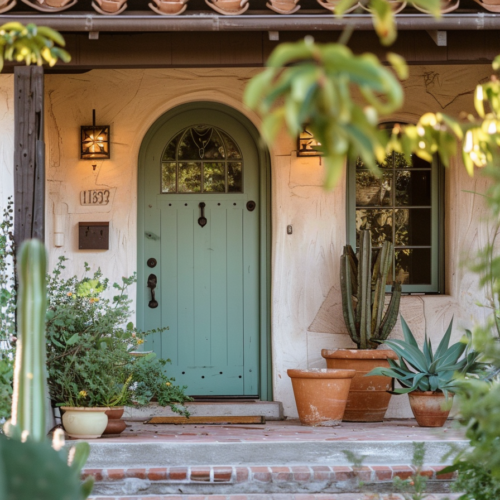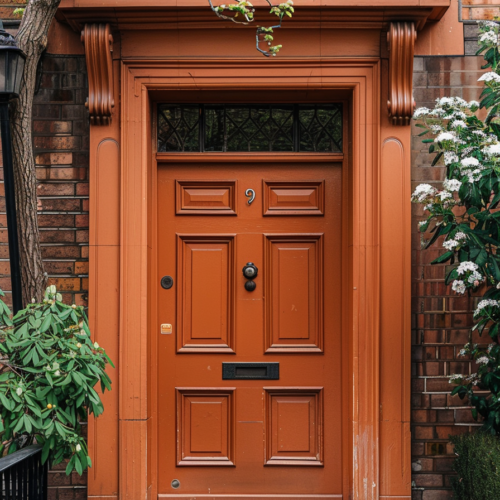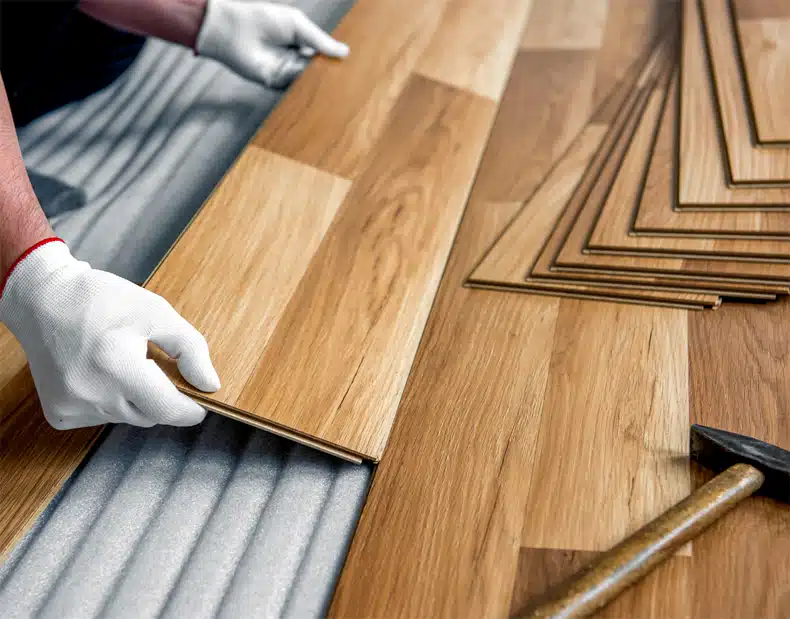
Laminate flooring was invented in the 1970s and has gained steady popularity worldwide. But not all laminate flooring is the same. Knowing the difference between the types of laminate flooring may mean the difference between being completely happy or always wishing you had chosen a different type of laminate flooring. So, what is the difference?
There are two types of laminate flooring: plastic (or artificial) and engineered wood. Both are made of layers of materials laminated together to form one plank. Both types come in glue-in, click-together, and pre-glued options and smooth, distressed, or textured finishes.
Each type of laminate floor has a specific function and purpose. Keep reading for details on each so you can make the best choice possible when installing laminate flooring in your home or business.
Types Of Laminate Flooring
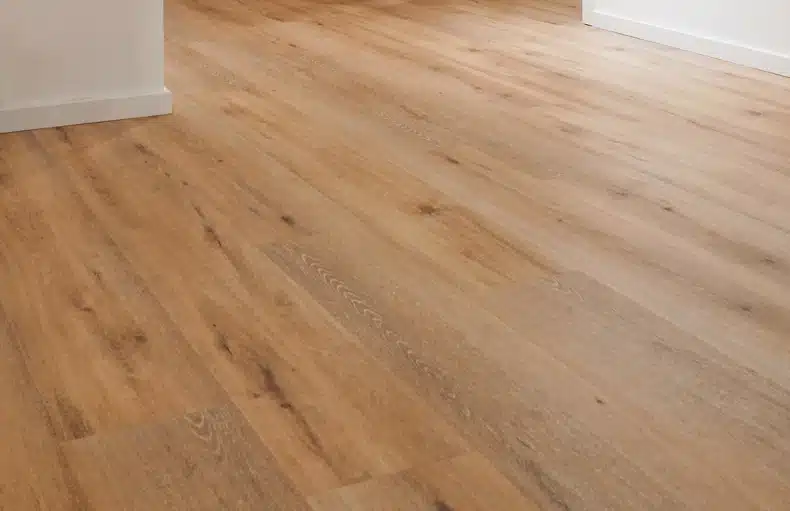
There are two types of laminate flooring:
- Plastic (or artificial/synthetic) laminate flooring, and
- Engineered wood laminate flooring
These two types of laminate flooring come in different installation options:
- Glue on
- Click-together (without glue)
- Pre-glued
Laminate flooring is durable, affordable, and easy to install by design.
- Laminate flooring is durable because the top layer is either a layer of acrylic-coated hardwood or a layer of clear hard plastic.
- It is affordable because the visible layers of hardwood or printed melamine are much thinner than solid wood floors, so the cost of materials is less.
- They are easy to install because they usually come in click-together or glue in 1/4 in. planks.
With the advances designers make in the printed décor layer, many new artificial laminate flooring options are difficult to distinguish from real-wood finish options but often come at half the price.
Let’s look at the two laminate flooring types.
- Plastic Or Artificial Laminate Flooring
Artificial laminate flooring is by far the most popular. This is the most popular type of laminate flooring because it is a reasonably priced and durable flooring option for home and business owners.
Artificial laminate flooring planks are layers of different materials sealed together into one plank.
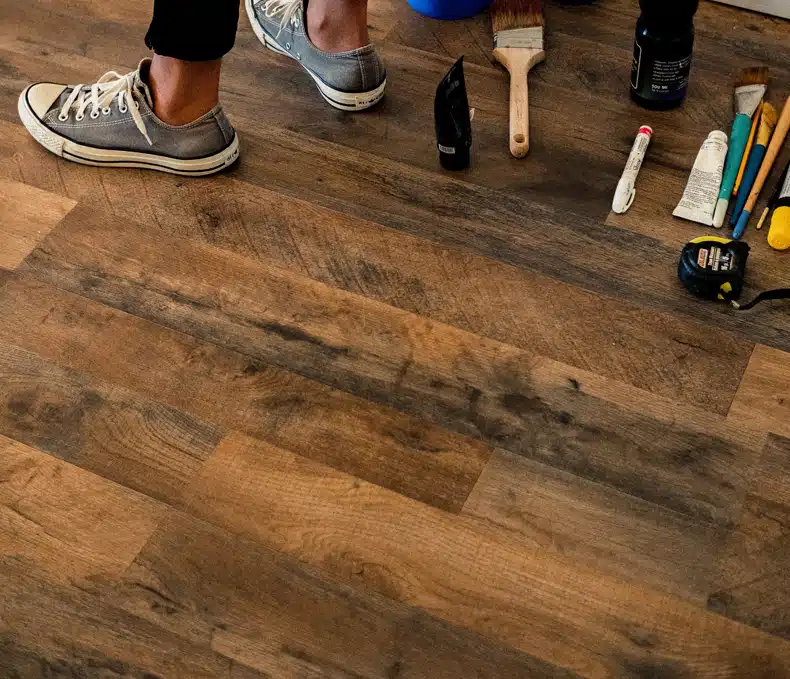
The layers are typically the following:
- A base or backer layer, often made of melamine
- A core layer that gives the plank structure, often made of resin-saturated fiberboard
- A décor layer that is printed with different patterns or images, such as wood or stone finish, and
- A sealing or wear layer, often made of thick plastic, protects the décor layer and makes the plank durable.
All the layers in the plank are artificial and, if installed correctly, are very hard-wearing.
- Engineered Wood Laminate Flooring
That real wood flooring look and feel without the hassles of installing and maintaining solid wood floors is why most people prefer this type of laminate flooring. They are, however, also very durable.
Engineered wood laminate flooring planks are layers of different hardwood sealed together into one plank and finished with layers of acrylic.
The layers are typically the following:
- A base or backer layer made of veneered hardwood
- A hardwood core, usually a cheaper or different color hardwood
- A hardwood surface layer in the wood finish you want
- Thin layers of UV-resistant acrylic finish
Because each layer is made from real wood that is glued and laminated together, some people say that the sound and ‘feel’ of engineered wood laminate flooring is much closer to that of real wood floors but with an easier installation.
Three Different Installation Options For Laminate Flooring
Whether you choose artificial or engineered wood laminate planks, these three installation options are usually the same.
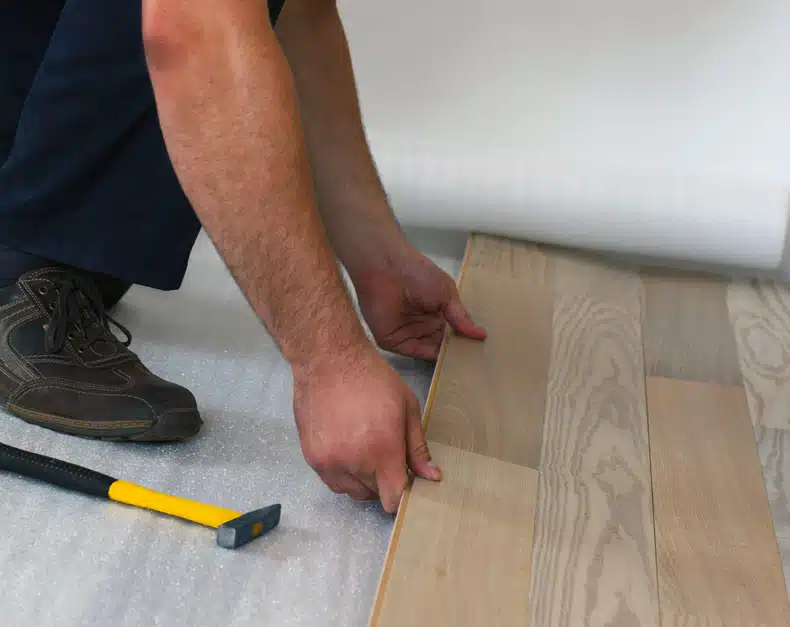
Glued Laminate Flooring
Originally, gluing planks in place was the method for installing all laminate flooring. Still, applying glue was often messy, and over time the preferred method shifted to click together. Although it is messy, glued laminate flooring is the most durable installation option.
Click Together Laminate Flooring Without Glue
This is the type of laminate flooring most people are familiar with, as it is the most popular. Because it doesn’t require glue, as the planks use a dovetail join with a double-click locking system to fit together, it is also the least messy and one of the easiest to install.
Pre-Glued Laminate Flooring
While not as effective as applying glue to laminate flooring planks, some brands come with a peel-and-stick glue backing. Professional installers often prefer this method because it gives the best of both glued and click-together installation options.
How To Choose The Best Laminate Flooring Type For You
Take these four factors into consideration when choosing the laminate flooring that will best suit your needs:
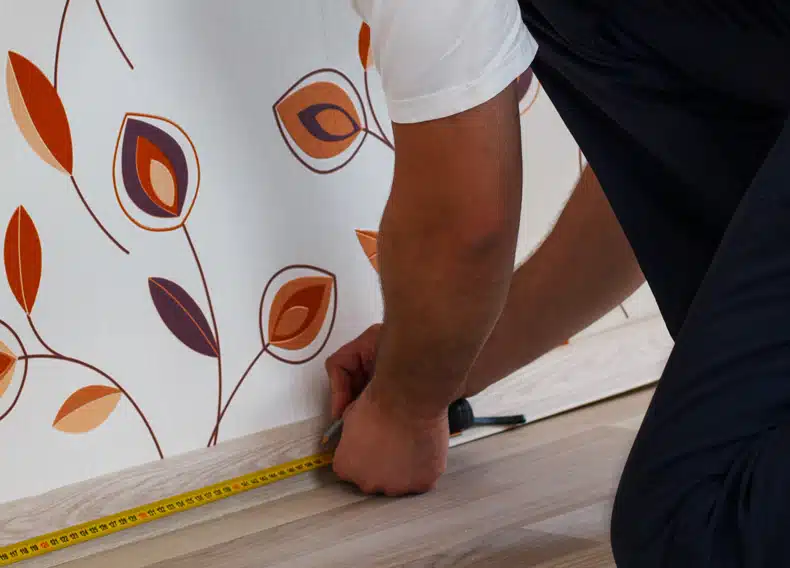
What Type Of Laminate Flooring Fits Your Budget?
This is often the deciding factor for most people: does it fit your budget? While engineered wood laminate flooring is usually more expensive, the look and feel are often more appealing. Go to a flooring store and place an engineered wood plank next to a plastic plank to see the differences between the two. Shop for the best prices on whichever type of laminate flooring you decide.
Also, consider the cost of the overall project you are working on. If you are only replacing the flooring of a room, you may be willing to spend a little extra. However, if you are renovating a whole room, laminate flooring is a good way to keep costs down.
How Much Traffic And Wear Will Your Laminate Floor Receive?
The higher the traffic and wear the floor will receive, the more durable the laminate flooring will need to be. Scratch-resistant finishes will serve well for higher traffic.
You may be tempted to say that because plastic laminate flooring is more durable than engineered wood laminate flooring, it is the obvious choice, but consider the following: most engineered wood laminate flooring can be buffed, sanded, and resealed with acrylic sealant (if done carefully by professionals), which may mean it has a longer potential lifespan than plastic or artificial laminate flooring.
If you still decide to use plastic laminate flooring, choose one with a high abrasion criteria (AC) rating.
Does The Laminate Floor Add Value To Your House Or Office?
A quality laminate floor will raise the value of a property. If you will be selling the property, the quality of the laminate flooring may be the deciding factor in the sale.
How Easy Is The Laminate Flooring To Install?
Laminate flooring can be installed by someone with only a small amount of DIY capability with a few simple tools. It is easier to install compared to other flooring materials.
FAQ
Does Laminate Flooring Need An Underlay?
All laminate flooring needs a layer of foam underlay. The underlay makes the floor a little softer to walk across and stops it from clicking or bending when you walk across it. The underlay gives an even surface over the subfloor, making it easier to install over the underlay. Always follow the instructions given with the underlay, as some brands use different methods to lay the underlay.
Does The Plank Width Of Laminate Flooring Matter?
The factor that will determine what width of laminate flooring plank to get is the unevenness of the subfloor. In general, narrower planks can tolerate more unevenness than wider planks. Narrower planks will snap together more easily and be more flush. Always check the directions for the laminate flooring before purchasing, as they will tell you how much unevenness the flooring can tolerate.
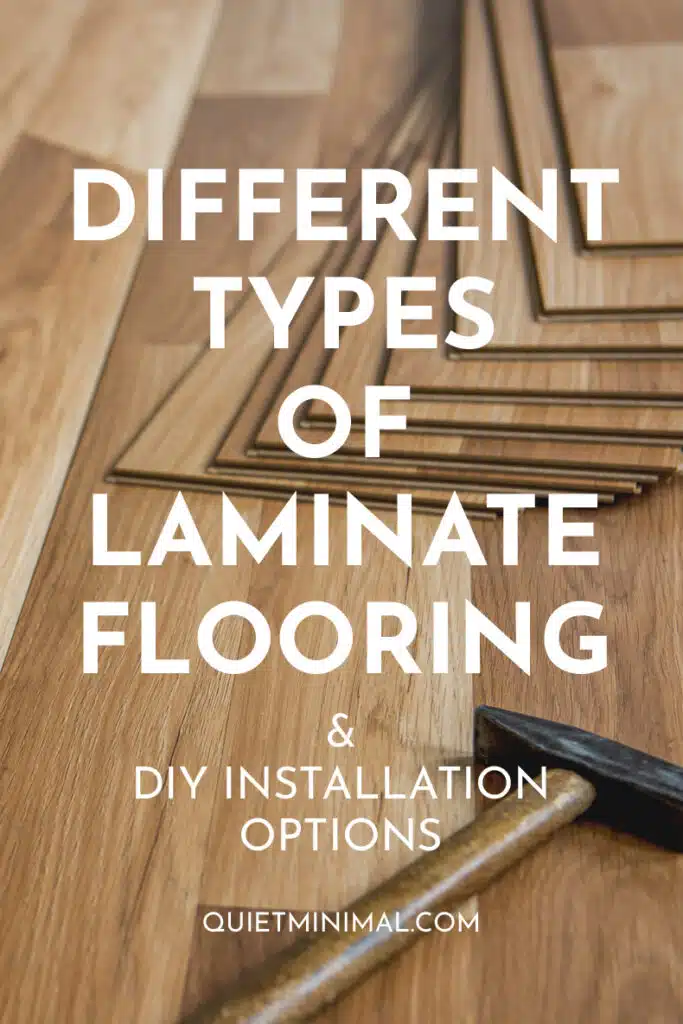
Conclusion
There are two types of laminate flooring: plastic or artificial and engineered wood laminate flooring. Which will suit you best depends on costs and the traffic the floor will receive.
While there are different installation options, all laminate flooring snaps together, and the only question is whether to use glue or not. Don’t forget to lay the underlay!
Follow Quiet Minimal on Pinterest for all your home and garden tips, ideas, and info!

